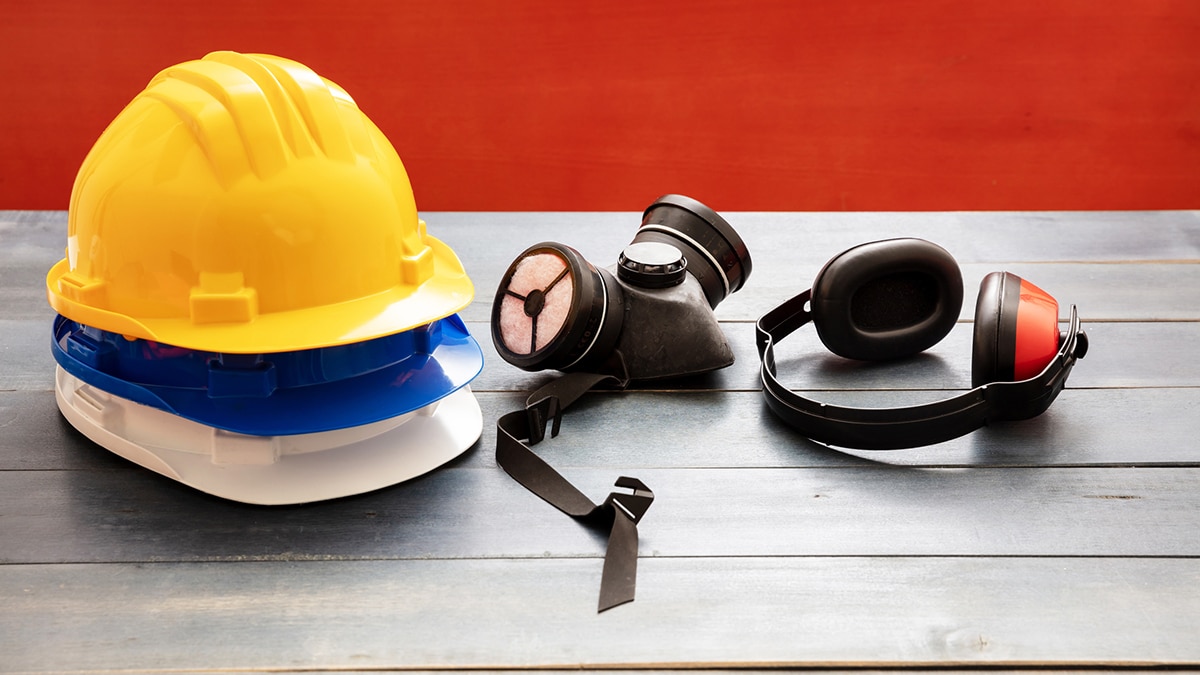Key points
- Personal protective equipment (PPE) can help protect you from hazards at work.
- You can use PPE while you are pregnant or breastfeeding.
- PPE is most effective when it fits properly.
- Gloves and respirators are two types of PPE.

What I should know about wearing PPE

Personal protective equipment (PPE) is equipment that is worn to reduce your exposure to hazardous chemicals and other hazards. Gloves, protective clothing, hearing protection, goggles, and respirators are types of PPE.
You should wear the right type of PPE based on your work tasks, hazards, and types of chemicals in the workplace. PPE must also be maintained correctly, or else it might provide little or no protection.
PPE typically reduces your exposure but does not eliminate it completely. Wearing PPE does not guarantee complete protection for you, or for a fetus if you are pregnant.
Choosing the right type of gloves
Some chemicals can pass through, or permeate, certain glove materials very quickly. The companies that sell gloves have guides that show how specific glove types or fabrics will hold up to specific chemicals. Work with your company's safety office or a company that sells PPE to find the right gloves and other PPE.
Here are examples of glove selection guides from companies:
Disclaimer: Mention of any company or product does not constitute endorsement by the National Institute for Occupational Safety and Health (NIOSH). Citations to Web sites external to NIOSH do not constitute NIOSH endorsement of the sponsoring organizations or their programs or products. Furthermore, NIOSH is not responsible for the content of these Web sites.
Respirators and pregnancy
Respirators are protective masks or hoods that you can wear to help you breathe cleaner air. There are many different types of respirators. Many respirators are unlikely to cause difficulties for pregnant workers, but there are a few things to consider:
- Weight changes can affect how a respirator fits
- If a respirator does not fit correctly, it may not protect you
- Some respirators can make you work harder to breathe
- Pregnancy can also make a person work harder to breathe
Talk to your doctor and safety officer to make sure you can wear your respirator safely and correctly throughout pregnancy. Pregnant women who have difficulty with their normal respirators might be able to make some changes at work, like:
- Switching job duties temporarily to avoid wearing a respirator
- Switching to a different kind of respirator
Resources
Getting help
Talk to your employer or safety officer about using appropriate PPE to reduce exposure to hazards.
For information on the Pregnant Workers Fairness Act, please see resources from the U.S. Equal Employment Opportunity Commission (EEOC) website.
If you, your doctor, or your employer need more information, contact CDC-INFO.
More information
NIOSH- Protective Clothing and Ensembles. This website provides information on choosing clothing, gloves, and eye protection.
NIOSH PPE Directory. This directory includes information on protective equipment, hearing protection, certified equipment lists, and respirator documentation.
OSHA- Personal Protective Equipment [PDF 618 KB] This is the official OSHA booklet on PPE. It describes different types of protective equipment and when they are appropriate. It also includes a brief chart of chemical resistance by glove type.
Quick Selection Guide to Chemical Protective Clothing, 7th ed. Forsberg K, et al. Wiley, 2020. This glove guidance document includes detailed information on chemical resistance, including break-through times for specific chemicals against different types of gloves.
